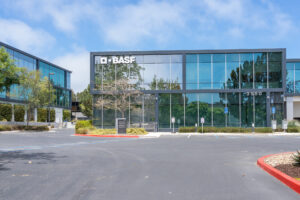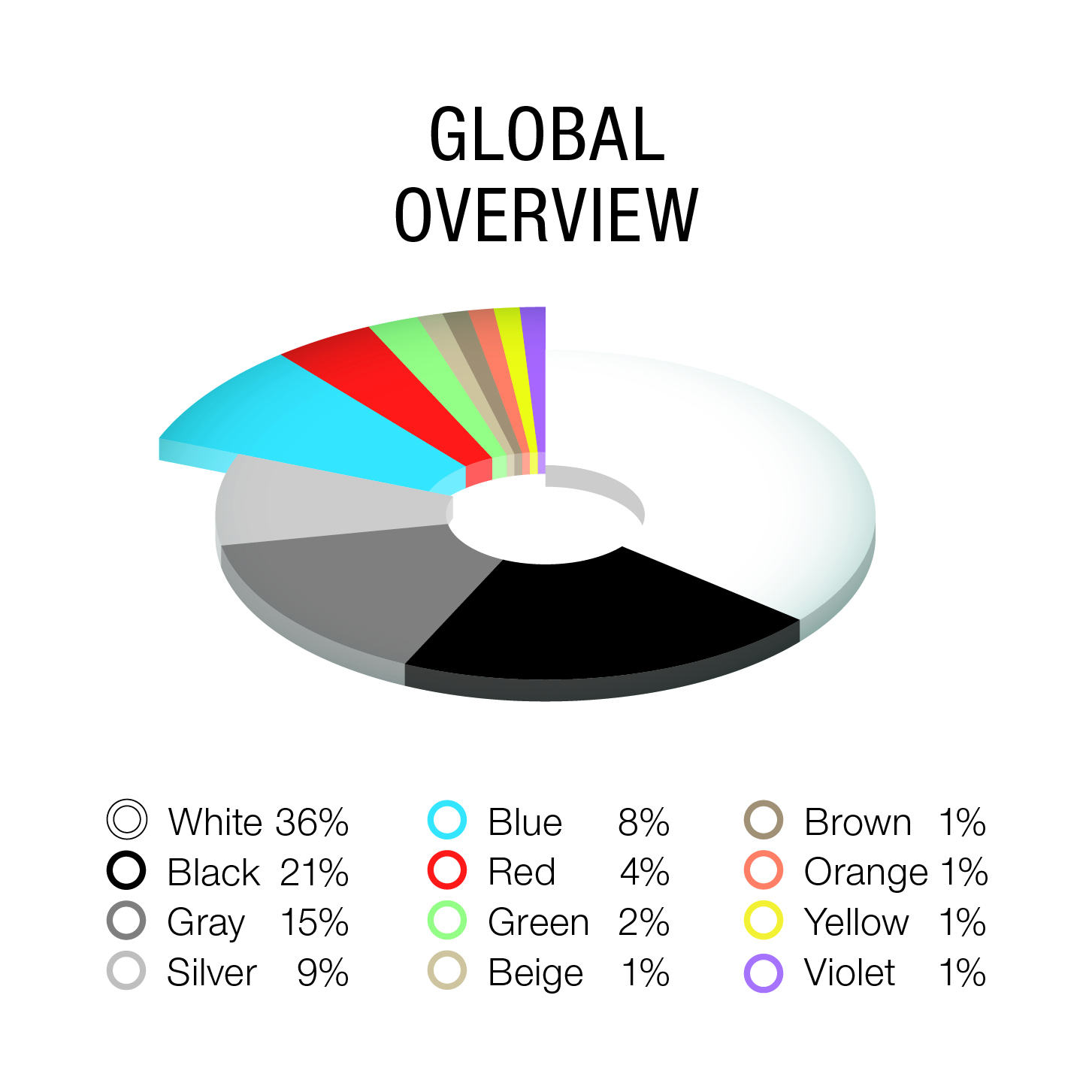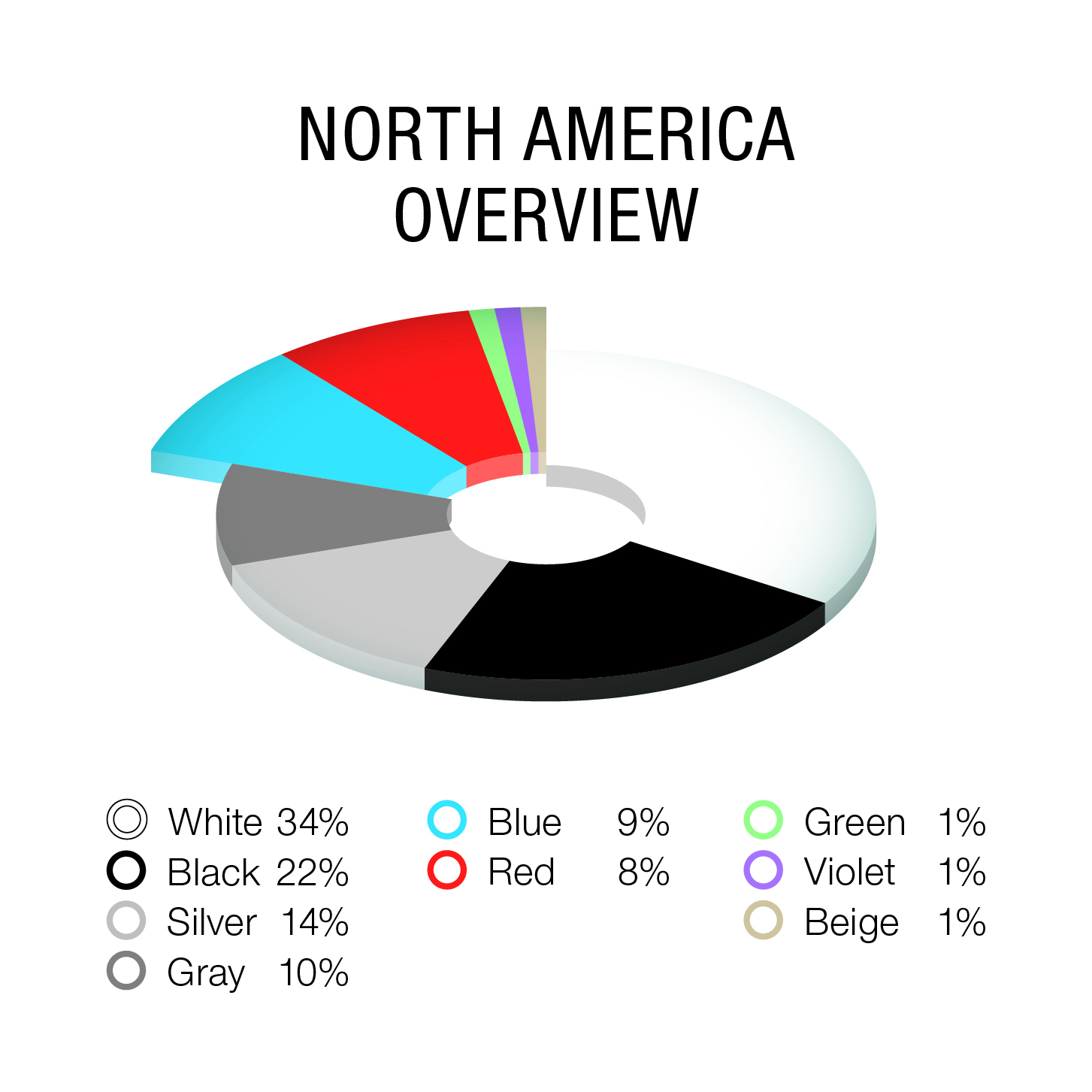
BASF: North America favors lighter shades & red, new ‘blended learning’ offered
By onMarket Trends
BASF’s “2023 Color Report for Automotive OEM Coatings” shows that consumer taste for classic vehicle colors is changing with lighter shades becoming more popular.
Achromatic colors — white, black, gray, and silver — are experiencing a significant shift in popularity while white continues to hold its position as the most popular color for light passenger vehicles, the report states. However, white has seen a notable decrease in market share. In contrast, black has surged in popularity, gaining market share at the expense of white, according to BASF.
Consumer preferences also vary across different regions. In North America, there is a growing preference for lighter shades of silver over darker grays, while in Europe, the Middle East, and Africa (EMEA), the trend leans toward darker shades.
 Chromatic colors including blue, red, brown, and beige have remained stable with no significant changes in their total market share, currently at 19%, maintaining popularity with vehicle owners.
Chromatic colors including blue, red, brown, and beige have remained stable with no significant changes in their total market share, currently at 19%, maintaining popularity with vehicle owners.
In North America, silver surpassed gray, moving up to the No. 3 most popular color. Consumers moved in a lighter direction after automakers retired several gray colors, which were often replaced with shades of silver, according to BASF.
North America also produced the highest share of red cars than any other global region. However, red was not able to beat blue as the most popular chromatic color.
 “We’re experiencing the same shift that other regions are seeing,” said Elizabeth M. Hoffmann, BASF color designer for North America, in a news release. “The old standard color palette no longer applies. Lighter shades are getting more popular, taking market share from gray. More and more choices have [affected] pigments to give them intensity and excitement.”
“We’re experiencing the same shift that other regions are seeing,” said Elizabeth M. Hoffmann, BASF color designer for North America, in a news release. “The old standard color palette no longer applies. Lighter shades are getting more popular, taking market share from gray. More and more choices have [affected] pigments to give them intensity and excitement.”
The 2023-24 edition includes cooling colors in the Americas, with “non-human intelligence” a strong driver for the designers who created the colors.
The Americas palette features softer hues, minimized textures, and subtle moves, which contribute to cooling effects in the vehicle with solar reflectance, BASF said in October. They also work with sensor-based mobility concepts and use more responsible raw material sourcing.
In Europe, there the colors that were favored were country-specific, according to the new trends report. Germany’s favorite was blue (11%), Spain and the UK preferred red and orange (9%), and France favored green (6%). Italy showed love for all the colors with its share of chromatic colors being the largest among all five countries at 30%, according to the report.
“While the achromatic colors are still the most popular, each country appears to have its favorite place on the chromatic realm,” said Mark Gutjahr, BASF global head of automotive color design. “Different color distribution could be seen in each of the major EMEA countries, and in general. Our customers, the automakers, have left a lot of room for individuality and creativity in car dealerships now, and car buyers are taking advantage of that.”
BASF has also announced a new “blended learning approach” to its certification process in place of two-day in-person and hands-on training.
All BASF customers go through a certification process. To reduce travel expenses and time away from the shop floor, BASF has converted one day of in-class instruction to online training hosted in its Learning University.
BASF says the new training approach “allows customers to start training whenever and wherever they are and still benefit from the face-to-face portion of the certification process.”
The online learning portion of the training process includes eight to 10 modules with an assessment after each module instead of a lengthy final exam, according to BASF.
Once the mandatory online portion is completed, customers can schedule their in-person class at the location of their choice. The in-person training also includes an assessment.
Participants will have 45 days to finish the process and can access their certificate of completion online. This training format is available for Glasurit and R-M courses.
“BASF aims to enhance customer experience with this move toward blended learning,” said Ralph Leija III, North America training manager, in a news release. “With 24/7 online access and accessible training, customers can get back on the shop floor quicker and start seeing success right away.”
Images
Featured image: BASF San Diego, California office in 2022. (Credit: JHVEPhoto/iStock)
Global and North America 0verview charts provided by BASF
